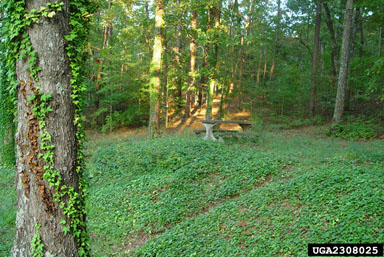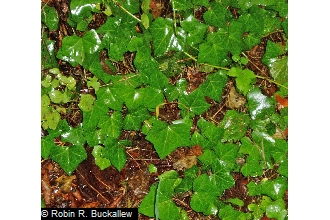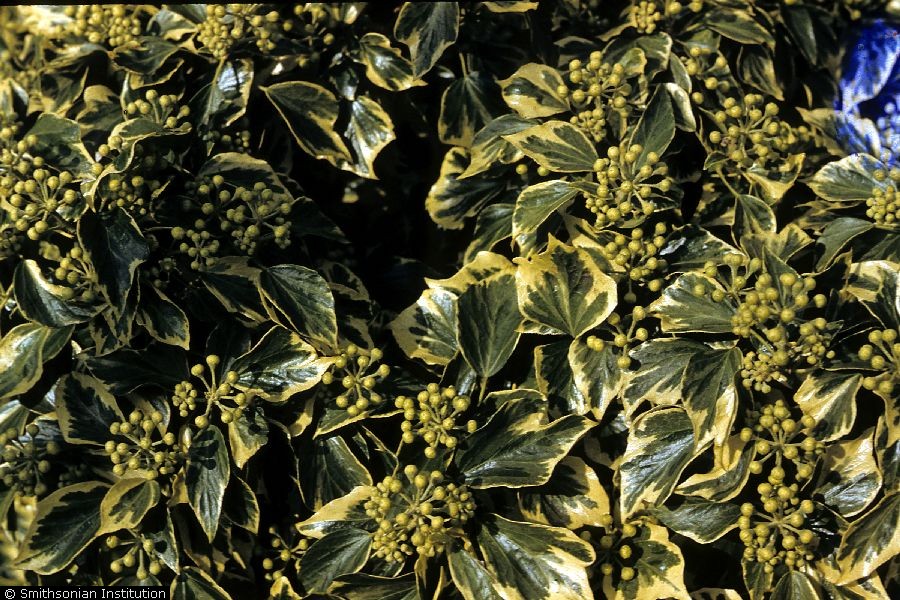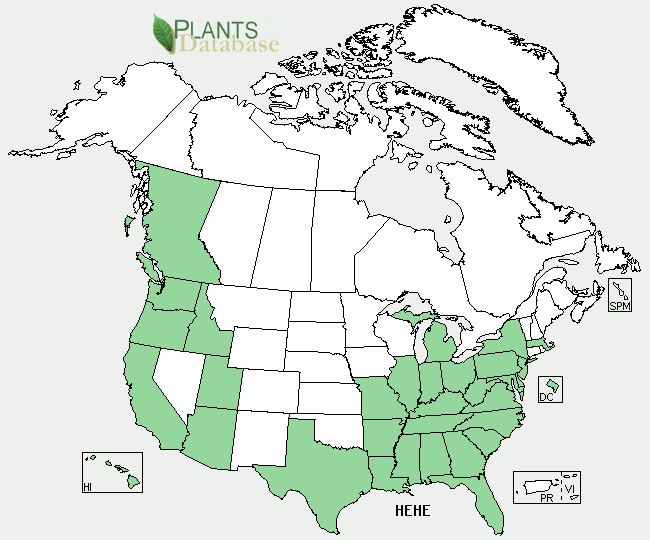Taxonomy: Kingdom - Plantae (plants). Subkingdom - Tracheobionta (vascular plants). Superdivision - Spermatophyta (seed plants). Division - Magnoliophyta (Flowering plants). Class - Magnoliopsida (Dicotyledons). Subclass - Rosidae. Order - apiales. Family - Araliaceae (Ginseng family). Genus - Hedera L.. Species - Hedera helix L. (English ivy).
Identification: English ivy is a woody, evergreen, trailing or climbing liana or shrub. In Europe, English ivy occasionally grows as a tree. English ivy has 2 distinct growth phases, the vegetative phase (juvenile) and the sexual reproductive phase (adult). Individual English ivy plants may have both juvenile and adult stems. The juvenile phase typically forms the ground cover. Juvenile English ivy begins to climb when vertical structure is available (e.g., trees, shrubs, buildings, utility poles), and vertical stems transition to the adult phase.
As a ground cover, English ivy grows from 10-20 cm tall. Once stems begin climbing, they typically reach 30 m in height but occasionally may climb higher, reaching the tops of 90 m conifers. English ivy climbs with the aid of root-like structures that exude an adhesive substance. Branches are typically slender on low-growing plants, but climbing and older trailing branches may be 10-30 cm in diameter, with furrowed bark. Leaves are typically 10 cm long, 6.4-13 cm wide and are 3 to 5 lobed in the juvenile phase and broadly lanceolate and unlobed in the adult phase. Flowers are clustered in umbels on adult stems.
English ivy's photosynthetic capacity adjusts for variable light levels; to what degree may be determined by the life phase (juvenile or adult) of the plant. In general, adult leaves have a greater photosynthetic capacity than juvenile leaves, even on the same plant... In some locations, English ivy may reach its greatest abundance in shade... English ivy's tolerance to a wide range of light levels suggests it may establish and/or persist throughout most successional stages.



